The Flaming Lips, "Finally, The Punk Rockers Are Taking ACID" & "The Day They Shot A Hole In The Jes
Withall the attention and surgence of popularity of Flaming Lips, it'sunsurprising that their older, pre-Warner Bros. material (which hasbecome increasingly harder to find) has been reissued through Restlessand Rykodisc. The good news is that there is a fairly large amount puremusical gold in the older material, and that these releases bring someattention to that. The bad news is that the early collection, Finally, The Punk Rockers Are Taking ACID, is pretty much fans-only material. It's not bad, but it's probably not what casual fans are going expect or even grow to like.
 The 3 CDs that make up ACIDare packed with extras and b-sides, but overall, it's all pretty raw.It's like the first EP, which makes up the first five tracks on thefirst disc, sung by Mark Coyne (Wayne's brother who later left theband). It's great if you're a fan, with a cover of Sonic Youth's "DeathValley '69," Neil Young's "After The Gold Rush," along with someclassic Flaming Lips songs like "One Million Billionth Of A MillisecondOn A Sunday Morning." The majority of the material from the 3 disc setcomes from the band's first few albums, Hear It Is, OH MY GAWD!!!...The Flaming Lips and Telepathic Surgery.The only concession to space seems to be "Hell's Angel's CrackerFactory," edited down from 20+ minutes to three. Excellent liner notesby head Lip, Wayne, round out the set as a real gem. A cheaper, morecompact overview of the pre-Warner bros. Flaming Lips, 1984-1990, is also available on Restless.
The 3 CDs that make up ACIDare packed with extras and b-sides, but overall, it's all pretty raw.It's like the first EP, which makes up the first five tracks on thefirst disc, sung by Mark Coyne (Wayne's brother who later left theband). It's great if you're a fan, with a cover of Sonic Youth's "DeathValley '69," Neil Young's "After The Gold Rush," along with someclassic Flaming Lips songs like "One Million Billionth Of A MillisecondOn A Sunday Morning." The majority of the material from the 3 disc setcomes from the band's first few albums, Hear It Is, OH MY GAWD!!!...The Flaming Lips and Telepathic Surgery.The only concession to space seems to be "Hell's Angel's CrackerFactory," edited down from 20+ minutes to three. Excellent liner notesby head Lip, Wayne, round out the set as a real gem. A cheaper, morecompact overview of the pre-Warner bros. Flaming Lips, 1984-1990, is also available on Restless.Samples:
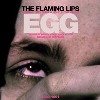 The Day They Shot A Hole In The Jesus EGG on the other hand, is a 2-disc set made up of the In A Priest Driven Ambulance album (and some extras) and a CD version of the often-bootlegged Mushroom Tapes (demos and outtakes from the In A Priest Driven Ambulanceperiod). The album itself is the first truly great Flaming Lips recordand the last before they went to Warner Bros. and is in many ways, thepinnacle of the Flaming Lips' pre-Warner/punk days. It included theaddition of another guitarist, Jonathan Donahue (later in Mercury Rev)and it was also the first time they worked with Dave Fridman, who wouldhelp the band sculpt itself into what it has become (this album was hissenior year thesis in college.) There are moments of brilliancescattered casually all over the album: the ambient cricket sounds andpassing cars on "There You Are" are because the band recorded theacoustic guitars in the middle of the night in a grocery store parkinglot near a highway; Wayne's off-key singing which give the songs anearnest feel they would otherwise lack; and the use of Jesus as a"something to believe in" stand-in rather than as a religioussignifier. The original In A Priest Driven Ambulance albumclosed off with a lopsided, but very (unintentionally) sweet cover of"What A Wonderful World," but this expanded version has a few moreextras, including a medley of The Sonics' "Strychnine," and "(What's SoFunny 'Bout) Peace, Love & Understanding." The second disc has afair amount of really cool outtakes, including a slide guitar jam thatlater became "There You Are." Also included are the two versions of oneof Priest Driven Ambulance's highlights, "Five Stop MotherSuperior Rain." One is made up of three minutes of feedback drones, theother twice as long and with a lovely piano line, while the original onthe first disc has melodic guitar lines instead of the piano. For abonus disc, it fulfils its purpose remarkably well—alongside the"Priest Driven Ambulance," the discs compliment each other beautifullyin a way that they couldn't alone.
The Day They Shot A Hole In The Jesus EGG on the other hand, is a 2-disc set made up of the In A Priest Driven Ambulance album (and some extras) and a CD version of the often-bootlegged Mushroom Tapes (demos and outtakes from the In A Priest Driven Ambulanceperiod). The album itself is the first truly great Flaming Lips recordand the last before they went to Warner Bros. and is in many ways, thepinnacle of the Flaming Lips' pre-Warner/punk days. It included theaddition of another guitarist, Jonathan Donahue (later in Mercury Rev)and it was also the first time they worked with Dave Fridman, who wouldhelp the band sculpt itself into what it has become (this album was hissenior year thesis in college.) There are moments of brilliancescattered casually all over the album: the ambient cricket sounds andpassing cars on "There You Are" are because the band recorded theacoustic guitars in the middle of the night in a grocery store parkinglot near a highway; Wayne's off-key singing which give the songs anearnest feel they would otherwise lack; and the use of Jesus as a"something to believe in" stand-in rather than as a religioussignifier. The original In A Priest Driven Ambulance albumclosed off with a lopsided, but very (unintentionally) sweet cover of"What A Wonderful World," but this expanded version has a few moreextras, including a medley of The Sonics' "Strychnine," and "(What's SoFunny 'Bout) Peace, Love & Understanding." The second disc has afair amount of really cool outtakes, including a slide guitar jam thatlater became "There You Are." Also included are the two versions of oneof Priest Driven Ambulance's highlights, "Five Stop MotherSuperior Rain." One is made up of three minutes of feedback drones, theother twice as long and with a lovely piano line, while the original onthe first disc has melodic guitar lines instead of the piano. For abonus disc, it fulfils its purpose remarkably well—alongside the"Priest Driven Ambulance," the discs compliment each other beautifullyin a way that they couldn't alone.


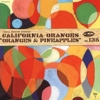 Fear not: although many of the favored indie rock bands of yesteryearhave either folded, made disappointing returns, or just flatdisappeared, some are restructuring and returning all the better forit. Holiday Flyer, the pop group founded by brother and sister John andKatie Conley, have split into two groups, with each sibling recordingtheir songs with the same backing band, just under two differentmonikers. California Oranges is John's project, with Verna Brock fromlater Holiday Flyer albums serving as the vocal partner and bassist.Twins Matt and Ross Levine round out the group, and the sound is notwhat you'd expect from Conley, but that's exactly the point. He'sturned up the volume on the guitars to blow you off of your couch, but,luckily, he's decided that the harmonies need to stay. I must saythat's one of the things I still enjoy most about indie power popbands: where the prevailing wisdom of today's singers is to trill andwarble their way through songs in some apparent impressive display ofvocal control, power pop just lets it slide and speak for itself.There's no remarkable vocal skill being shown here, and no need forhistrionics. It's just powerful feel-good music. "Broken Typewriter"starts the album off with a bang, and it doesn't let up once, hardlygiving you time to catch your breath. Occasionally, the tempo slows, ason "Come Back Now," but throughout Conley and Brock reveal lovelyinterplay, though Brock's vocals could have used more volume in the mixhere and there. Clean guitar tones and a solid rhythm section make forsmooth sailing, too, so there's hardly a misstep. California Orangesjust rock, and Oranges and Pineapples is a solid debut with plenty worth a repeat listen.
Fear not: although many of the favored indie rock bands of yesteryearhave either folded, made disappointing returns, or just flatdisappeared, some are restructuring and returning all the better forit. Holiday Flyer, the pop group founded by brother and sister John andKatie Conley, have split into two groups, with each sibling recordingtheir songs with the same backing band, just under two differentmonikers. California Oranges is John's project, with Verna Brock fromlater Holiday Flyer albums serving as the vocal partner and bassist.Twins Matt and Ross Levine round out the group, and the sound is notwhat you'd expect from Conley, but that's exactly the point. He'sturned up the volume on the guitars to blow you off of your couch, but,luckily, he's decided that the harmonies need to stay. I must saythat's one of the things I still enjoy most about indie power popbands: where the prevailing wisdom of today's singers is to trill andwarble their way through songs in some apparent impressive display ofvocal control, power pop just lets it slide and speak for itself.There's no remarkable vocal skill being shown here, and no need forhistrionics. It's just powerful feel-good music. "Broken Typewriter"starts the album off with a bang, and it doesn't let up once, hardlygiving you time to catch your breath. Occasionally, the tempo slows, ason "Come Back Now," but throughout Conley and Brock reveal lovelyinterplay, though Brock's vocals could have used more volume in the mixhere and there. Clean guitar tones and a solid rhythm section make forsmooth sailing, too, so there's hardly a misstep. California Orangesjust rock, and Oranges and Pineapples is a solid debut with plenty worth a repeat listen. Anybody with software can glitch and nearly anybody with a drum machine and sequencing keyboard can make a dance record, but to twist the machines into a modern electronic pop masterpiece requires a healthy amount of both talent and skill. This, the Bpitch Control label matriarch's third full-length album, is a perfect example.
Anybody with software can glitch and nearly anybody with a drum machine and sequencing keyboard can make a dance record, but to twist the machines into a modern electronic pop masterpiece requires a healthy amount of both talent and skill. This, the Bpitch Control label matriarch's third full-length album, is a perfect example.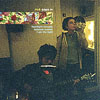 Dave Pajo has been quite busy lately as a member of Zwan. To make timefor his own project, Papa M, he's taken to writing and recording invarious cities while on tour and releasing the end result as acollection of CD singles: something he refers to as an audio tourdiary. Disc one in this series is comprised of three tracks recorded inChicago, Bloomington, and Pajo's hometown of Louisville. The relaxedpickin' feel of "Flashlight Tornado" comes off with somewhat of aback-to-basics, coffeehouse approach of acoustic guitar, voice andharmonica. The beautifully re-worked "Beloved Woman" (originally from2002's Whatever, Mortal)opens with a near-violent layering of cello and violin which then dronethroughout the tune's progressions with a eerie seductiveness thatbrings gooseflesh. In keeping with the Songs of Mac EP, Pajocloses out with his arrangement of another writer's song. The ReverendGary Davis' "I Am the Light of This World" is a laid back, minor-keystrummy guitar number augmented with sitar sounds and minimal keyboardwith religious imagery that Pajo conveys very convincingly. As it'salways a pleasure to hear Papa M, hearing the stripped down, bare bonestake on these tunes is all the more special as the focus is more on thesolo artist instead of the full group effort.
Dave Pajo has been quite busy lately as a member of Zwan. To make timefor his own project, Papa M, he's taken to writing and recording invarious cities while on tour and releasing the end result as acollection of CD singles: something he refers to as an audio tourdiary. Disc one in this series is comprised of three tracks recorded inChicago, Bloomington, and Pajo's hometown of Louisville. The relaxedpickin' feel of "Flashlight Tornado" comes off with somewhat of aback-to-basics, coffeehouse approach of acoustic guitar, voice andharmonica. The beautifully re-worked "Beloved Woman" (originally from2002's Whatever, Mortal)opens with a near-violent layering of cello and violin which then dronethroughout the tune's progressions with a eerie seductiveness thatbrings gooseflesh. In keeping with the Songs of Mac EP, Pajocloses out with his arrangement of another writer's song. The ReverendGary Davis' "I Am the Light of This World" is a laid back, minor-keystrummy guitar number augmented with sitar sounds and minimal keyboardwith religious imagery that Pajo conveys very convincingly. As it'salways a pleasure to hear Papa M, hearing the stripped down, bare bonestake on these tunes is all the more special as the focus is more on thesolo artist instead of the full group effort.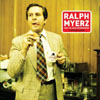 Despite their unwieldy name which suggests a rather sizeable ensemble,this Norwegian group is in actuality a trio comprised of DJ ErlendSellevold (aka Ralph Myerz) and his cohorts Tarjei Strom and ThomasLonnheim. This, their debut full-length, which is heavily influenced by'60s and '70s film scores, has already placed the band high on thecharts in their native land. In fact, Ralph Myerz & Co. borrowedparts of their moniker from sleazemaster Russ Meyer and his cameraman,Jack Herren, as a result of their fixation upon the soundtracks forMeyers' films when the group initially came together.
Despite their unwieldy name which suggests a rather sizeable ensemble,this Norwegian group is in actuality a trio comprised of DJ ErlendSellevold (aka Ralph Myerz) and his cohorts Tarjei Strom and ThomasLonnheim. This, their debut full-length, which is heavily influenced by'60s and '70s film scores, has already placed the band high on thecharts in their native land. In fact, Ralph Myerz & Co. borrowedparts of their moniker from sleazemaster Russ Meyer and his cameraman,Jack Herren, as a result of their fixation upon the soundtracks forMeyers' films when the group initially came together. Few truly solo artists can produce an album with this kind of majesty.The last time we heard from Mull Historical Society was 2001's Loss,a carefully planned work and worthwhile listen, but featuring a bit toomuch extraneous nonsense. Two years later, founding member Alan Malloyhas departed, leaving Colin MacIntyre to act on his own. Since theywere his songs to begin with—Mull Historical Society has always workedfrom MacIntyre's extensive backlog of already-written songs—it seemslike this shouldn't be that big a deal. Seeing the immense failure ofother solo artist projects where other band members have departed tellsotherwise. He could just as easily screw it all up instead of making animpressive record. Thankfully, here he manages the latter, as Usis my front-runner for album of the year at this point. Wonderful useof strings, piano, and bright guitars intermingle under MacIntyre'sdecidedly goofy voice, as he gives it all in these songs, playing outhis emotions with no strings attached. Everything tends to brisklyshuffle or jangle along with a great mix of instruments and subjectmatter. When things do slow down a bit, like on "Asylum," there's stilla bright edge that could very well be a train at the other end of thetunnel. I didn't care, though, as long as it sounds this good, thiscomplete. The album is great from conception to execution, even whenMacIntyre shows off his trademark odd sense of humor on tracks like"The Supermarket Strikes Back." This is a transition point, where anartist makes or breaks themselves based upon past experience, and MHSblows right past it without a care in the world. I could listen to tenrecords of this and still not get enough.
Few truly solo artists can produce an album with this kind of majesty.The last time we heard from Mull Historical Society was 2001's Loss,a carefully planned work and worthwhile listen, but featuring a bit toomuch extraneous nonsense. Two years later, founding member Alan Malloyhas departed, leaving Colin MacIntyre to act on his own. Since theywere his songs to begin with—Mull Historical Society has always workedfrom MacIntyre's extensive backlog of already-written songs—it seemslike this shouldn't be that big a deal. Seeing the immense failure ofother solo artist projects where other band members have departed tellsotherwise. He could just as easily screw it all up instead of making animpressive record. Thankfully, here he manages the latter, as Usis my front-runner for album of the year at this point. Wonderful useof strings, piano, and bright guitars intermingle under MacIntyre'sdecidedly goofy voice, as he gives it all in these songs, playing outhis emotions with no strings attached. Everything tends to brisklyshuffle or jangle along with a great mix of instruments and subjectmatter. When things do slow down a bit, like on "Asylum," there's stilla bright edge that could very well be a train at the other end of thetunnel. I didn't care, though, as long as it sounds this good, thiscomplete. The album is great from conception to execution, even whenMacIntyre shows off his trademark odd sense of humor on tracks like"The Supermarket Strikes Back." This is a transition point, where anartist makes or breaks themselves based upon past experience, and MHSblows right past it without a care in the world. I could listen to tenrecords of this and still not get enough. 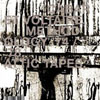 For Cabs collectors and fans of their Industrial Records-era music,this collection is a dream come true. Three CDs of unreleased songs andearly versions are compiled at a surprisingly cheap cost. From theearliest material on the first disc, the sound quality is amazinglyclear. Songs here run the gamut from fully realized tunes to plenty ofhalf-assed noodling. At no point, however, even for the most minimalnoodlings, is it ever dull. This -is- entertainment. (Especially thewalking jazz tune "The Single," where lyrics include "come on kidslet's jive," "come on girls, slide your feet," and plenty of "doo-doodoo-doo"s!) A document like this is evidence that Sheffield's finesthaven't always been depressing anti-establishmentalists. Furthermore,hearing the (then) trio of Kirk, Mallinder and Watson play around withsound effects and layered spoken word bits is actually far moreinteresting on record to hear than a lot of the modern classical soundsof electronic composers that seem to be surfacing by the bucketloadslately. The Cabs clearly had a pop mentality to match their anti-poptendencies and kept songs relatively brief and to-the-point. At somepoint, however, the sound bursts become songs, the instruments becomelearned, the skills become perfected. Sure, there's probably plenty ofattic tapes from many bands' youths floating around, but, by the sax,guitar and keyboard echoes of "Magnet," something really cool is takingplace and we're fortunate to be able to get documentation. It's a lotof material to wade through (53 songs in all) and not all of it isstellar. For a collection which claims to be all previously unreleasedrecordings, the version of "Do the Mussolini (Headkick)" on disc twomysteriously sounds as if it was mastered from a record with clicks andskips. It might have made more sense to include these alternateversions on the recent Original Sound of Sheffieldcomp as things like "No Escape," "Here She Comes Now," and "Nag, Nag,Nag" don't sound much different and appear on numerous releasesalready. I'm also getting sick of the recycled Designers Republicformat for Cab Volt reissue material: the printing in my booklet isdreadful, with bleeding blurry grey text that's next to impossible toread on the greyscale background images—perhaps that's the point, butit's becoming a cheap cop-out. Furthermore, they keep listing web sitesfor Cabaret Voltaire that don't exist yet. This has been a trend sincethe late 1990s that continues to this day. The web site here atBrainwashed has remained the best web resource for all Cabaret Voltairematerial and has not changed its URL since 1996, damnit! It's lame thatthey keep ignoring it for sites that aren't online! Okay, enough of mybitching, enjoy the four hours of great music and hope that things likeChance vs. Causality and other unreleased things are due out soon.
For Cabs collectors and fans of their Industrial Records-era music,this collection is a dream come true. Three CDs of unreleased songs andearly versions are compiled at a surprisingly cheap cost. From theearliest material on the first disc, the sound quality is amazinglyclear. Songs here run the gamut from fully realized tunes to plenty ofhalf-assed noodling. At no point, however, even for the most minimalnoodlings, is it ever dull. This -is- entertainment. (Especially thewalking jazz tune "The Single," where lyrics include "come on kidslet's jive," "come on girls, slide your feet," and plenty of "doo-doodoo-doo"s!) A document like this is evidence that Sheffield's finesthaven't always been depressing anti-establishmentalists. Furthermore,hearing the (then) trio of Kirk, Mallinder and Watson play around withsound effects and layered spoken word bits is actually far moreinteresting on record to hear than a lot of the modern classical soundsof electronic composers that seem to be surfacing by the bucketloadslately. The Cabs clearly had a pop mentality to match their anti-poptendencies and kept songs relatively brief and to-the-point. At somepoint, however, the sound bursts become songs, the instruments becomelearned, the skills become perfected. Sure, there's probably plenty ofattic tapes from many bands' youths floating around, but, by the sax,guitar and keyboard echoes of "Magnet," something really cool is takingplace and we're fortunate to be able to get documentation. It's a lotof material to wade through (53 songs in all) and not all of it isstellar. For a collection which claims to be all previously unreleasedrecordings, the version of "Do the Mussolini (Headkick)" on disc twomysteriously sounds as if it was mastered from a record with clicks andskips. It might have made more sense to include these alternateversions on the recent Original Sound of Sheffieldcomp as things like "No Escape," "Here She Comes Now," and "Nag, Nag,Nag" don't sound much different and appear on numerous releasesalready. I'm also getting sick of the recycled Designers Republicformat for Cab Volt reissue material: the printing in my booklet isdreadful, with bleeding blurry grey text that's next to impossible toread on the greyscale background images—perhaps that's the point, butit's becoming a cheap cop-out. Furthermore, they keep listing web sitesfor Cabaret Voltaire that don't exist yet. This has been a trend sincethe late 1990s that continues to this day. The web site here atBrainwashed has remained the best web resource for all Cabaret Voltairematerial and has not changed its URL since 1996, damnit! It's lame thatthey keep ignoring it for sites that aren't online! Okay, enough of mybitching, enjoy the four hours of great music and hope that things likeChance vs. Causality and other unreleased things are due out soon. Insomnia has a grip on many people for a variety of reasons. Stress,illness, hyperactivity, or just plain non-interest are several causesfor the inability to sleep. Many products exist with a sole purpose ofaiding in the pursuit of slumber, from pills to specialized alarmclocks and CDs with soothing sound effects or music that put the mindand body at ease. If Thousands, a band with very experimental leanings,have decided to help in their own way. Aaron Molina and ChristianMcShane started playing music together by abandoning their respectiveinstruments to start anew. They decided to play instruments thatneither knew how to play in the pursuit of music from a completelynaive standpoint. Their second album, Lullabywas recorded with twelve microphones spaced throughout the room, togive the listener spacial awareness; and the album is one long trackthat has been split up only for song identification purposes. Itspurpose is to aid the listener to sleep, and the band intends it to belistened to in one sitting to accomplish this goal. Immediately, uponlistening to the disc, the track titles have no meaning. The drone thatis omnipresent in these songs says it all. Everything blends together,and the different instruments that will be used on different tracks areonly used to obtain a slight variation. Above all else this music mustspeak with one voice for its entire length, and it does. It calms andrelaxes, and when there are vocals (the repeated refrain on "TheDaylight and the Sun," for instance), they are spoken, unobtrusive andfaded with some effect or another. The music speaks without vocals, sotherefore it has no need for them. The track titles do speak as amethod to the madness, however, as they suggest the loss of a lovedone, Matt, for whom these structures are dedicated. It is as if theband created the work for themselves or for Matt's family to help themto sleep, or to hopefully commune with him in their dreams. Lullaby,therefore, is a fascinating listen not just for the effect it isintended to cause, but for the mystery of the story behind itscreation. Chiefly, it is drone music with a purpose, one that I canattest it serves very well.
Insomnia has a grip on many people for a variety of reasons. Stress,illness, hyperactivity, or just plain non-interest are several causesfor the inability to sleep. Many products exist with a sole purpose ofaiding in the pursuit of slumber, from pills to specialized alarmclocks and CDs with soothing sound effects or music that put the mindand body at ease. If Thousands, a band with very experimental leanings,have decided to help in their own way. Aaron Molina and ChristianMcShane started playing music together by abandoning their respectiveinstruments to start anew. They decided to play instruments thatneither knew how to play in the pursuit of music from a completelynaive standpoint. Their second album, Lullabywas recorded with twelve microphones spaced throughout the room, togive the listener spacial awareness; and the album is one long trackthat has been split up only for song identification purposes. Itspurpose is to aid the listener to sleep, and the band intends it to belistened to in one sitting to accomplish this goal. Immediately, uponlistening to the disc, the track titles have no meaning. The drone thatis omnipresent in these songs says it all. Everything blends together,and the different instruments that will be used on different tracks areonly used to obtain a slight variation. Above all else this music mustspeak with one voice for its entire length, and it does. It calms andrelaxes, and when there are vocals (the repeated refrain on "TheDaylight and the Sun," for instance), they are spoken, unobtrusive andfaded with some effect or another. The music speaks without vocals, sotherefore it has no need for them. The track titles do speak as amethod to the madness, however, as they suggest the loss of a lovedone, Matt, for whom these structures are dedicated. It is as if theband created the work for themselves or for Matt's family to help themto sleep, or to hopefully commune with him in their dreams. Lullaby,therefore, is a fascinating listen not just for the effect it isintended to cause, but for the mystery of the story behind itscreation. Chiefly, it is drone music with a purpose, one that I canattest it serves very well.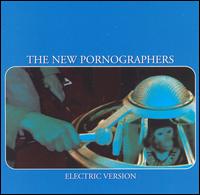 Pornography's aim is to please, regardless of context or meaning, thesimple aesthetic end is pleasure for pleasure's sake. Thus, it seemsapt that the New Pornographers have chosen such a name for themselves.Their first release, 2000's Mass Romanticwas a furiously bright amalgam of its talented principal members, whichinclude Carl Newman of Zumpano, and Destroyer's Dan Bejar, as well asthe sultry, soulful (and this writer's #1 musical crush) Neko Case. Mass Romanticbuzzed with the input of all of the members, their identities lending adiverse, off-kilter tone to the impeccably crafted pop songs thatpermeated the album. It was a meeting of the minds, collaboration inthe truest sense of the word, which recognized the individual buttriumphed the whole with impressive results. Three years later, thegroup has come together again to give us Electric Version, aformidable follow up that finds the group in a more comfortable nook,and honing their skills into a tightly focused point. The familiarharmonious chorale of the New Pornographer's is never far away, but'Electric Version' shows signs of growth from, or perhaps just theenhancement of the original blueprint. "The End of Medicine" hitsperfectly, with Newman's unique lyrical phrasing backed up by Case'spowerful voice amidst the densely packed, chugging music, replete withfluttering keyboard and jangling electric guitar. The lead andbackground roles established here are found throughout the album, withCarl Newman taking much more of a leadership role in the group thanbefore. His voice emerges in the foreground far more than either Caseor Bejar (who has relegated himself to 'secret member' status, unableto devote a large amount of time to the project recently). Newman'scontributions are wonderful, from the mid-tempo jangle of "July Jones"to the rollicking "It's Only Divine Right." Still, Bejar takes the helmfor three of the album's songs, most notably the anthemic "Testament toYouth in Verse," which rises from a modest beginning to explode with achanting sing a long finale that features the New Pornographer'simpeccable harmonies. Neko finally finds herself taking command on "AllFor Swinging You Around," which beautifully showcases the versatilityof her voice, capable of a fun jaunt as well as her trademarkintensity. Both "The Laws Have Changed" and "The New Face of Zero andOne" see Newman and Case together, with fantastic results. Neko was allover Mass Romantic, and though her mark is both seen and heard throughout the album, the rationing of her lead vocals on Electric Version make the appearances even more satisfying. If anything, Electric Versionshows that The New Pornographers are developing from a pastiche ofsources into a slick, smooth unit with a sound instantly identifiableas their own. Most importantly, they're out to make fun, exciting, andenjoyable music without an ounce of pretense or thought ofself-importance. It's great music for it's own sake, and that's enough.
Pornography's aim is to please, regardless of context or meaning, thesimple aesthetic end is pleasure for pleasure's sake. Thus, it seemsapt that the New Pornographers have chosen such a name for themselves.Their first release, 2000's Mass Romanticwas a furiously bright amalgam of its talented principal members, whichinclude Carl Newman of Zumpano, and Destroyer's Dan Bejar, as well asthe sultry, soulful (and this writer's #1 musical crush) Neko Case. Mass Romanticbuzzed with the input of all of the members, their identities lending adiverse, off-kilter tone to the impeccably crafted pop songs thatpermeated the album. It was a meeting of the minds, collaboration inthe truest sense of the word, which recognized the individual buttriumphed the whole with impressive results. Three years later, thegroup has come together again to give us Electric Version, aformidable follow up that finds the group in a more comfortable nook,and honing their skills into a tightly focused point. The familiarharmonious chorale of the New Pornographer's is never far away, but'Electric Version' shows signs of growth from, or perhaps just theenhancement of the original blueprint. "The End of Medicine" hitsperfectly, with Newman's unique lyrical phrasing backed up by Case'spowerful voice amidst the densely packed, chugging music, replete withfluttering keyboard and jangling electric guitar. The lead andbackground roles established here are found throughout the album, withCarl Newman taking much more of a leadership role in the group thanbefore. His voice emerges in the foreground far more than either Caseor Bejar (who has relegated himself to 'secret member' status, unableto devote a large amount of time to the project recently). Newman'scontributions are wonderful, from the mid-tempo jangle of "July Jones"to the rollicking "It's Only Divine Right." Still, Bejar takes the helmfor three of the album's songs, most notably the anthemic "Testament toYouth in Verse," which rises from a modest beginning to explode with achanting sing a long finale that features the New Pornographer'simpeccable harmonies. Neko finally finds herself taking command on "AllFor Swinging You Around," which beautifully showcases the versatilityof her voice, capable of a fun jaunt as well as her trademarkintensity. Both "The Laws Have Changed" and "The New Face of Zero andOne" see Newman and Case together, with fantastic results. Neko was allover Mass Romantic, and though her mark is both seen and heard throughout the album, the rationing of her lead vocals on Electric Version make the appearances even more satisfying. If anything, Electric Versionshows that The New Pornographers are developing from a pastiche ofsources into a slick, smooth unit with a sound instantly identifiableas their own. Most importantly, they're out to make fun, exciting, andenjoyable music without an ounce of pretense or thought ofself-importance. It's great music for it's own sake, and that's enough.  Live electronic music performance was a novelty in 1964 as was the useof electronic percussion instruments. Perhaps even more progressive wasthat Max Neuhaus' version of Cage's Fontana Mixis used nothing but feedback. Neuhaus placed contact microphones on topof kettle drums and put the drums in front of loud speakers. Themicrophones were free to move around on the drums. The performercontrolled the intensity of each microphone with a mixer and Neuhausdid this following a performance score that he prepared from JohnCage's Fontana Mix. This indeterminate composition from 1958comprises a grid and a set of curved lines, some with dots, ontransparencies. The interpreter arranges these in superposition tocreate a unique new graphic image from which, following theinstructions, a performance score from is derived. Using this procedureNeuhaus created the set of curves that he used to control the intensityof each microphone in the mix and used this score in each performance.However, the feedback system itself is a very sensitive andunpredictable instrument, so much so that even following the same scorethe resulting music is essentially indeterminate. Hence the sixdifferent versions on this CD, four live and two studio recordings,spanning 1965-68 are very different from each other. Neuhaus, abrilliant and highly respected percussionist, would put Feed onthe program of high-brow contemporary percussion concerts in placeslike the Carnegie Recital Hall and he would play it very loud. It'samusing to imagine the responses in the highly cultivated audiences.The remarkable thing is that even in today's context with decades ofnoise art behind us, Neuhaus' trail-blazing performances from the mid60s are brilliant. The music is relentless feedback noise but has astructural complexity that, if you can tolerate its basic assault, isfascinating and hypnotic. It is piercing and very abrasive but onceimmersed in it, and if you are willing to play it loud enough, itsvitality and detail are consuming. Neuhaus' musical genius blazesthrough this brutal material in manner that puts many a modern noiseartist in their place.
Live electronic music performance was a novelty in 1964 as was the useof electronic percussion instruments. Perhaps even more progressive wasthat Max Neuhaus' version of Cage's Fontana Mixis used nothing but feedback. Neuhaus placed contact microphones on topof kettle drums and put the drums in front of loud speakers. Themicrophones were free to move around on the drums. The performercontrolled the intensity of each microphone with a mixer and Neuhausdid this following a performance score that he prepared from JohnCage's Fontana Mix. This indeterminate composition from 1958comprises a grid and a set of curved lines, some with dots, ontransparencies. The interpreter arranges these in superposition tocreate a unique new graphic image from which, following theinstructions, a performance score from is derived. Using this procedureNeuhaus created the set of curves that he used to control the intensityof each microphone in the mix and used this score in each performance.However, the feedback system itself is a very sensitive andunpredictable instrument, so much so that even following the same scorethe resulting music is essentially indeterminate. Hence the sixdifferent versions on this CD, four live and two studio recordings,spanning 1965-68 are very different from each other. Neuhaus, abrilliant and highly respected percussionist, would put Feed onthe program of high-brow contemporary percussion concerts in placeslike the Carnegie Recital Hall and he would play it very loud. It'samusing to imagine the responses in the highly cultivated audiences.The remarkable thing is that even in today's context with decades ofnoise art behind us, Neuhaus' trail-blazing performances from the mid60s are brilliant. The music is relentless feedback noise but has astructural complexity that, if you can tolerate its basic assault, isfascinating and hypnotic. It is piercing and very abrasive but onceimmersed in it, and if you are willing to play it loud enough, itsvitality and detail are consuming. Neuhaus' musical genius blazesthrough this brutal material in manner that puts many a modern noiseartist in their place. Prolific blues and avant-garde guitarist Loren Connors follows up 2002's The Departing of a Dream with this, its logical eight-song sequel. The first album was reportedly a "loose" tribute to Miles Davis's He Loved Him Madly,so one must assume that Vol. II is a continuation of a theme.Contemplative guitar accompanies tape loops/manipulations and fieldrecordings to issue a slow, laggard drone of an album. Devoid of titles(I think the intention is to call them by their numerical track order),the songs do indeed meld into one another and create an amalgamatedsound collage rather than an album composed of individual songs.Generally, it happens that about the time I realize there are no propersong titles for an album that I also realize that the album in questionis not going to be a collection of autonomous tracks. "1" and "7,"however, are distinct for their length: they are both over ten minuteslong, whereas every other song clocks in at under two minutes (except"8;" it breaks the mold by enduring for two and a half minutes). Upuntil "8," the sound is like that of the barest, sparest Flying SaucerAttack song. It drones and resonates until your head envisions itselfin a cave with walls of smooth black onyx along which the sound creepsand reverberates into cavities and over stalactites. The music dronesin and out in accordance with the topography of the cave and seeminglyby no other design. But then along comes "8" and suddenly the dark caveof black onyx is shattered like the most brittle Formica, floodinglight and distance into the once encapsulating cave. Honestly, "8" islike an archangel descending from a rainbow onto the firmament. Thetempo picks up, melody creeps uninvited into the album, and ratherquickly you forget about the cave and are ready to wander about,unfettered in the sunlight.
Prolific blues and avant-garde guitarist Loren Connors follows up 2002's The Departing of a Dream with this, its logical eight-song sequel. The first album was reportedly a "loose" tribute to Miles Davis's He Loved Him Madly,so one must assume that Vol. II is a continuation of a theme.Contemplative guitar accompanies tape loops/manipulations and fieldrecordings to issue a slow, laggard drone of an album. Devoid of titles(I think the intention is to call them by their numerical track order),the songs do indeed meld into one another and create an amalgamatedsound collage rather than an album composed of individual songs.Generally, it happens that about the time I realize there are no propersong titles for an album that I also realize that the album in questionis not going to be a collection of autonomous tracks. "1" and "7,"however, are distinct for their length: they are both over ten minuteslong, whereas every other song clocks in at under two minutes (except"8;" it breaks the mold by enduring for two and a half minutes). Upuntil "8," the sound is like that of the barest, sparest Flying SaucerAttack song. It drones and resonates until your head envisions itselfin a cave with walls of smooth black onyx along which the sound creepsand reverberates into cavities and over stalactites. The music dronesin and out in accordance with the topography of the cave and seeminglyby no other design. But then along comes "8" and suddenly the dark caveof black onyx is shattered like the most brittle Formica, floodinglight and distance into the once encapsulating cave. Honestly, "8" islike an archangel descending from a rainbow onto the firmament. Thetempo picks up, melody creeps uninvited into the album, and ratherquickly you forget about the cave and are ready to wander about,unfettered in the sunlight.  There's just something about a band that creates their own instrumentsto make the message they commit to tape. They thumb their nose atconventional instrumentation, striving for a higher statement of being,demanding more struggle for themselves before composing their work.Once they've made sounds with that new instrument, though, the resultoften doesn't produce anything resembling a great leap forward, and canget mired in its own imperfection. Unfortunately, that is the case withClang Quartet, whose new album had so much promise. The title, a switchon a familiar phrase, becomes funny but incredibly appropriateconsidering that so much hate is generated by differing religions andthose that follow them. Cover art drives the point home even moreeffectively, as what appears to be swastikas mixed with crucifixesjumble together until indistinguishable from each other. The keyproblem with The Separationis that the power of this concept is belittled by the sounds inside,and therefore the message, though admirable and necessary, isirrevocably lost. The sound of this record is not only generallyunappealing, but in areas almost unlistenable. Scotty Irving, who isthe Clang Quartet, believes the line between sound and music to beinvalid, and it shows. He loves percussion, so most songs arestructured as purely beat driven with an unaltering melody. The openingtrack, appropriately titled "Amazing Disgrace," is monotonous andultimately just gains volume and distortion, plus a few keyboard-likesounds that may or may not be "The Crutch" (Irving's new and originalbut ugly instrument). Loud angry drums that appear towards the end addmore flavor and still more volume, but the overall effect is stillstatic and annoying. "Under God" feature squelches and buzzes instead,effects that burble and bleep, but grate above all else. "The InfidelWithin" has wild tracks, commentary, and a bit of sermonizing fromIrving, all dealing with the infamous Proctor & Gamble Church ofSatan argument. The track is wholly uninteresting, although it isimpartial, and this time it's Irving himself that is the annoying part.When it isn't percussive nonsense driving the tracks, it's his voice("Hadephobia") or message, which apparently involves increasedself-promotion ("Two or More Gathered in HIS Name Part 2"). Hisrepeated assertion that he does not create "music" is supported quitewell by these songs, but it's infortunate that he does have amessage worth delivering. The fact that it's not comfortably delivered,or even coherently for that matter, does it a great disservice. Evenwhere he drives the message home lightly, it's like nails on achalkboard. Messages like his are never easy to listen to, but ClangQuartet go an awful distance to make it more uncomfortable than itneeds to be, and thus the message goes unheard or gets misunderstood inthe final analysis.
There's just something about a band that creates their own instrumentsto make the message they commit to tape. They thumb their nose atconventional instrumentation, striving for a higher statement of being,demanding more struggle for themselves before composing their work.Once they've made sounds with that new instrument, though, the resultoften doesn't produce anything resembling a great leap forward, and canget mired in its own imperfection. Unfortunately, that is the case withClang Quartet, whose new album had so much promise. The title, a switchon a familiar phrase, becomes funny but incredibly appropriateconsidering that so much hate is generated by differing religions andthose that follow them. Cover art drives the point home even moreeffectively, as what appears to be swastikas mixed with crucifixesjumble together until indistinguishable from each other. The keyproblem with The Separationis that the power of this concept is belittled by the sounds inside,and therefore the message, though admirable and necessary, isirrevocably lost. The sound of this record is not only generallyunappealing, but in areas almost unlistenable. Scotty Irving, who isthe Clang Quartet, believes the line between sound and music to beinvalid, and it shows. He loves percussion, so most songs arestructured as purely beat driven with an unaltering melody. The openingtrack, appropriately titled "Amazing Disgrace," is monotonous andultimately just gains volume and distortion, plus a few keyboard-likesounds that may or may not be "The Crutch" (Irving's new and originalbut ugly instrument). Loud angry drums that appear towards the end addmore flavor and still more volume, but the overall effect is stillstatic and annoying. "Under God" feature squelches and buzzes instead,effects that burble and bleep, but grate above all else. "The InfidelWithin" has wild tracks, commentary, and a bit of sermonizing fromIrving, all dealing with the infamous Proctor & Gamble Church ofSatan argument. The track is wholly uninteresting, although it isimpartial, and this time it's Irving himself that is the annoying part.When it isn't percussive nonsense driving the tracks, it's his voice("Hadephobia") or message, which apparently involves increasedself-promotion ("Two or More Gathered in HIS Name Part 2"). Hisrepeated assertion that he does not create "music" is supported quitewell by these songs, but it's infortunate that he does have amessage worth delivering. The fact that it's not comfortably delivered,or even coherently for that matter, does it a great disservice. Evenwhere he drives the message home lightly, it's like nails on achalkboard. Messages like his are never easy to listen to, but ClangQuartet go an awful distance to make it more uncomfortable than itneeds to be, and thus the message goes unheard or gets misunderstood inthe final analysis. 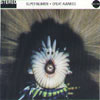 Hailing from Liverpool (the city best known for it's ship yards andother musical exports), Super Numeri are a communal musical collectivethat re-create the spacey and organic sounds of mid-70s fusion andupdate it with instrumentation that doesn't seem to be too far of astretch by today's standards. Based around a core of three members, anextra ten musicians augment their compositions with a plethora ofsounds throughout the eight earthy tracks that make up their Great Aviariesdisc. Opening with what is easily an homage to the man known to be theinventor of fusion, Miles Davis, "The Electric Horse Garden" ebbs andflows with sitar drones and organ swells while the presence of relaxedbass and drums support the pretty and expressive jazzy guitar layeringswithout getting totally psychedelic. "Otter's Poll" adds live harppluckings to the free form mix of low-end synth drones, loose drummingand glockenspiel topped off with a lush string section. The odd-timesignature and choppy syncopation of "Beaks" meshes with singled-noteddirty guitar and bass playing off the beat while noise guitar andelectronic whirls ensue. The reggae-styled groove of "Classic BritishPonds" is touched up with some subtle Brazilian tambourine playing fora vibraphone-padded track peppered with treated guitar sounds.Unfortunately, the gradual building of this track takes away from itshypnotic effect and points out out that there's only been one groovegoing all along. For the most part, Super Numeri cohesively stretch outtheir musical ideas around some simple yet interesting motifs, ratherthan taking the more self-indulgent jam-band approach. The disc's titleisn't very far off the mark as there is a lot of vibrant beauty to befound throughout each individual track.
Hailing from Liverpool (the city best known for it's ship yards andother musical exports), Super Numeri are a communal musical collectivethat re-create the spacey and organic sounds of mid-70s fusion andupdate it with instrumentation that doesn't seem to be too far of astretch by today's standards. Based around a core of three members, anextra ten musicians augment their compositions with a plethora ofsounds throughout the eight earthy tracks that make up their Great Aviariesdisc. Opening with what is easily an homage to the man known to be theinventor of fusion, Miles Davis, "The Electric Horse Garden" ebbs andflows with sitar drones and organ swells while the presence of relaxedbass and drums support the pretty and expressive jazzy guitar layeringswithout getting totally psychedelic. "Otter's Poll" adds live harppluckings to the free form mix of low-end synth drones, loose drummingand glockenspiel topped off with a lush string section. The odd-timesignature and choppy syncopation of "Beaks" meshes with singled-noteddirty guitar and bass playing off the beat while noise guitar andelectronic whirls ensue. The reggae-styled groove of "Classic BritishPonds" is touched up with some subtle Brazilian tambourine playing fora vibraphone-padded track peppered with treated guitar sounds.Unfortunately, the gradual building of this track takes away from itshypnotic effect and points out out that there's only been one groovegoing all along. For the most part, Super Numeri cohesively stretch outtheir musical ideas around some simple yet interesting motifs, ratherthan taking the more self-indulgent jam-band approach. The disc's titleisn't very far off the mark as there is a lot of vibrant beauty to befound throughout each individual track. 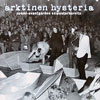 This is a thoroughly energizing collection of 60s Finnish bizarrenessthat has several gems on it and serves as an excellent introduction tothe early Finnish scene. Kurenniemi pops up several times. His DIMAsynth appears on Jukka Ruohomäki's "What Time Is," a blues tunereminding me a bit of Martin Rev's electro doo-wop. The Sähkökvartettisynth is played by a band of the same name in a fabulous liveperformance that sounds uncannily like Pan Sonic in parts complete withwailing voice controlled tones, automaton electronic beats and lashingsof distortion and feedback. His own performance on the Andromaticsynth, Antropoidien Tanssi, is a demented rhythmic atonal assembly ofprimitive electronic sounds. The relatively mainstream band BluesSection contributes their "B-side Shivers of Pleasure," combininggroovy garage rock with tape effects and outlandish collectiveextemporization. Then there's a blazing sax/drums free improv with atotally over the top amplified sax sound from Jouni Kesti and Seppo I.Lane. The Sperm make two showings: band leader Pekka Airaksinen'sbrooding repetitive tape loop guitar work features in "3rd Erection"while the band's exuberant confrontational live performance is shownoff in the excerpts from their opera "Garden of Death" (a photo of aperformance of which graces the cover). With slightly disconnectedguitar, organ, sax, pummeling drums and wailing vocals it has thecreative energy of the Mothers of Invention or Sun Ra. Among some otherthings, there's a blues burp fest, a very strange vote countingexercise in which the name of Finnish president Urho Kekkonen isrepeated in a disconcerting melody, and an "aleatoric assault againstSpiro Agnew by an academic philosopher."
This is a thoroughly energizing collection of 60s Finnish bizarrenessthat has several gems on it and serves as an excellent introduction tothe early Finnish scene. Kurenniemi pops up several times. His DIMAsynth appears on Jukka Ruohomäki's "What Time Is," a blues tunereminding me a bit of Martin Rev's electro doo-wop. The Sähkökvartettisynth is played by a band of the same name in a fabulous liveperformance that sounds uncannily like Pan Sonic in parts complete withwailing voice controlled tones, automaton electronic beats and lashingsof distortion and feedback. His own performance on the Andromaticsynth, Antropoidien Tanssi, is a demented rhythmic atonal assembly ofprimitive electronic sounds. The relatively mainstream band BluesSection contributes their "B-side Shivers of Pleasure," combininggroovy garage rock with tape effects and outlandish collectiveextemporization. Then there's a blazing sax/drums free improv with atotally over the top amplified sax sound from Jouni Kesti and Seppo I.Lane. The Sperm make two showings: band leader Pekka Airaksinen'sbrooding repetitive tape loop guitar work features in "3rd Erection"while the band's exuberant confrontational live performance is shownoff in the excerpts from their opera "Garden of Death" (a photo of aperformance of which graces the cover). With slightly disconnectedguitar, organ, sax, pummeling drums and wailing vocals it has thecreative energy of the Mothers of Invention or Sun Ra. Among some otherthings, there's a blues burp fest, a very strange vote countingexercise in which the name of Finnish president Urho Kekkonen isrepeated in a disconcerting melody, and an "aleatoric assault againstSpiro Agnew by an academic philosopher."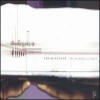 After two 12" EP's and a bunch of compilation tracks, it is gratifyingfinally to have a proper full-length from Lexaunculpt. "The Turning ofa Miniature Modem" begins the album with the sounds of an orchestratuning, which is an aptly chosen prologue since "orchestral" is an aptterm to describe Alex Graham's music. There always seems to be thishovering chamber orchestra in Lexaunculpt tracks, a rippling softnessand smoothness which vies against the foreground of clicks and glitchesand fizzles. More so than other glitch artists, Lexaunculpt makes songswhich are quite amenable as hip hop beats without actually employingsamples of extant hip hop beats. In other words, some of these songswould be an earnest emcee's wet dream. Following the introductorytuning session, "Has Been Trying Not To Wonder" undergoes a slickmetamorphosis halfway through when bubbling energetic clicks degradeinto a rhythmic synthesized insect orchestra. If this does not soundlike an enjoyable metamorphosis, trust me that it is lovely andrevealing. "A Funeral For a Pink Elephant Ear" is a nearly non-existenttrack which compels you to strain all parts of your auditory systemjust to sense if anything is happening or whether Mr. Graham hastricked us with two minutes of John Cage's copyrighted silence."Strangelove Offline" sounds less like a babbling and demented PeterSellers than it does a malfunctioning and demented Twiki robot fromBuck Rogers. Lexaunculpt waits until the very end to deliver the gem ofthe album. "Emori Dixon Renamed" is a synth-heavy song loaded withstatic which suggests that Graham's Blurring of Treestransmission is breaking up and about to dissipate. There are even somediminutive vocals trying to break through the static, or perhapsinvading from some other ghost signal. In general, I am more oftenengaged by the thick synth songs (there are a group of these whichcomprise full songs or sometimes parts of songs; they sound amazinglyorchestral and celestial at the same time) because they make me bristlewhen I hear them. For this reason, I have always wanted to score themto that part in the first Superman movie when Marlon Brando as Jor-Elis waging his closing arguments against Terence Stamp's General Zod inthat infamous treason case. When I see Zod and his two mutinouscomrades (Non and Vond-Ah) encircled by the silver hula hoops(Krypton's advanced technology for a jail cell) and the faces of theKryptonian elders all around enshrouded in darkness, I really want tobe hearing Lexaunculpt's soaring "Le Elancholia" and not whateverthrowaway piece John Williams contributed, or even the disinterestedvoice of the prosecutorial Marlon Brando. Come to think of it,Lexaunculpt would make an eerily good soundtrack for any escape podtrip from Krypton to Earth, as well.
After two 12" EP's and a bunch of compilation tracks, it is gratifyingfinally to have a proper full-length from Lexaunculpt. "The Turning ofa Miniature Modem" begins the album with the sounds of an orchestratuning, which is an aptly chosen prologue since "orchestral" is an aptterm to describe Alex Graham's music. There always seems to be thishovering chamber orchestra in Lexaunculpt tracks, a rippling softnessand smoothness which vies against the foreground of clicks and glitchesand fizzles. More so than other glitch artists, Lexaunculpt makes songswhich are quite amenable as hip hop beats without actually employingsamples of extant hip hop beats. In other words, some of these songswould be an earnest emcee's wet dream. Following the introductorytuning session, "Has Been Trying Not To Wonder" undergoes a slickmetamorphosis halfway through when bubbling energetic clicks degradeinto a rhythmic synthesized insect orchestra. If this does not soundlike an enjoyable metamorphosis, trust me that it is lovely andrevealing. "A Funeral For a Pink Elephant Ear" is a nearly non-existenttrack which compels you to strain all parts of your auditory systemjust to sense if anything is happening or whether Mr. Graham hastricked us with two minutes of John Cage's copyrighted silence."Strangelove Offline" sounds less like a babbling and demented PeterSellers than it does a malfunctioning and demented Twiki robot fromBuck Rogers. Lexaunculpt waits until the very end to deliver the gem ofthe album. "Emori Dixon Renamed" is a synth-heavy song loaded withstatic which suggests that Graham's Blurring of Treestransmission is breaking up and about to dissipate. There are even somediminutive vocals trying to break through the static, or perhapsinvading from some other ghost signal. In general, I am more oftenengaged by the thick synth songs (there are a group of these whichcomprise full songs or sometimes parts of songs; they sound amazinglyorchestral and celestial at the same time) because they make me bristlewhen I hear them. For this reason, I have always wanted to score themto that part in the first Superman movie when Marlon Brando as Jor-Elis waging his closing arguments against Terence Stamp's General Zod inthat infamous treason case. When I see Zod and his two mutinouscomrades (Non and Vond-Ah) encircled by the silver hula hoops(Krypton's advanced technology for a jail cell) and the faces of theKryptonian elders all around enshrouded in darkness, I really want tobe hearing Lexaunculpt's soaring "Le Elancholia" and not whateverthrowaway piece John Williams contributed, or even the disinterestedvoice of the prosecutorial Marlon Brando. Come to think of it,Lexaunculpt would make an eerily good soundtrack for any escape podtrip from Krypton to Earth, as well.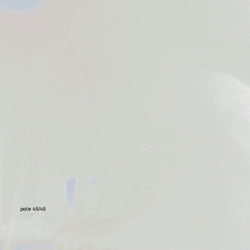 With the three albums under the Pole moniker, Stefan Betke became a dubpioneer with his broken Waldorf 4-pole filter unit. The digitizedgrooves of the Basic Channel set achieved far more exposure withBetke's well-distributed albums. For a time, it became the hottestsound in the IDM genre, with labels like Mille Plateaux pumping outnumerous releases from a plethora of artists. However, it was not longbefore somewhat-related glitch/clicks and cuts became the next trend.Still, Betke persevered with his ~scape label, giving a forum for otherartists with a similar vision (such as Jan Jelinek, Kit Clayton, andBernd Friedman), particularly with the popular Staeditizm compilationseries. After listening to this new EP, some of his peers haveapparently rubbed off on him. Starting with "Arena," a new percussiveelement has entered into the mix, creating something more similar totraditional dub music. The deep stabs that made up Pole melodies take abackseat to the funkier grooves, with mixed results over the course ofthese four songs. Pole's formerly ascetic, purist style was whatendeared me to his music in the first place. The stripped-down natureof his 1album portrayed a focused artist pushing a defective machine beyond itsexpected potential to create something beautiful and innovative. Bymoving into more accessible areas, Pole dangerously threatens his ownrelevance among the glut of experimental music releases. It would beremiss of me to play the "his older stuff is better" card withoutgiving him proper credit for creating something that while different isstill enjoyable. Particularly, the closer, "Back Home," has a certainjazzy quality that would almost fit on a Kruder & Dorfmeister mixCD, but transcends the recent output of the G-Stone family as of late.So to be fair, I will wait to pass judgement until the new albumemerges in July. Then again, I'm just a music reviewer for a website.Think for your own fucking self.
With the three albums under the Pole moniker, Stefan Betke became a dubpioneer with his broken Waldorf 4-pole filter unit. The digitizedgrooves of the Basic Channel set achieved far more exposure withBetke's well-distributed albums. For a time, it became the hottestsound in the IDM genre, with labels like Mille Plateaux pumping outnumerous releases from a plethora of artists. However, it was not longbefore somewhat-related glitch/clicks and cuts became the next trend.Still, Betke persevered with his ~scape label, giving a forum for otherartists with a similar vision (such as Jan Jelinek, Kit Clayton, andBernd Friedman), particularly with the popular Staeditizm compilationseries. After listening to this new EP, some of his peers haveapparently rubbed off on him. Starting with "Arena," a new percussiveelement has entered into the mix, creating something more similar totraditional dub music. The deep stabs that made up Pole melodies take abackseat to the funkier grooves, with mixed results over the course ofthese four songs. Pole's formerly ascetic, purist style was whatendeared me to his music in the first place. The stripped-down natureof his 1album portrayed a focused artist pushing a defective machine beyond itsexpected potential to create something beautiful and innovative. Bymoving into more accessible areas, Pole dangerously threatens his ownrelevance among the glut of experimental music releases. It would beremiss of me to play the "his older stuff is better" card withoutgiving him proper credit for creating something that while different isstill enjoyable. Particularly, the closer, "Back Home," has a certainjazzy quality that would almost fit on a Kruder & Dorfmeister mixCD, but transcends the recent output of the G-Stone family as of late.So to be fair, I will wait to pass judgement until the new albumemerges in July. Then again, I'm just a music reviewer for a website.Think for your own fucking self. I caught a live performance by Providence, RI-based Barnacled lastwinter in a cold, dark mill and was impressed by their humorous blendof jazz-inflected improvisation, textural noise, and quaint melodies.This CD does a fine job of capturing their unique sound. The openingtrack is a little too zany with its cut-ups between cartoon-like themesand purposefully heavy segments sounding too technical for its ownsake. While I love music that doesn't take itself too seriously, thiscan have a tendency to border on annoying if it comes off as overlysterile and precise. The band redeems itself through the improv thatfollows, particularly the quieter parts, where the accordion, baritonesax, and electronics can really display their unique sounds. One of themost mellow tracks, "Sea Hag" is almost comically moody, sounding likea demented lounge band providing accompaniment for late night drinking."Crisply Ambiguous" is similar; it interjects storms of crashingaccordion and saxophone into a strangely catchy melody. The accordionis definitely a highlight—it's used so infrequently in most improv, andhere it's played very well, leading the group down various tangents."Garbage And (Garbage And Fire)" is well-executed, starting withrepeating jazzy motifs, then building up into loud, full-band noisethat's held back by rather boring drum work, before ending with a morechaotic revisiting of the original theme. "France Attacks" is thelongest and probably most interesting song. It has a medley ofParisian-sounding accordion, lovely dual saxophone harmoniesaccompanied by quiet electronics, and the obligatory loud sections thatcome out of nowhere and disappear just as quickly. Some of the musicthroughout 6tends to drag occasionally and at times lacks variety. One othercomplaint is the compression of the recording; it doesn't convey asmuch intensity as they are capable of when the moderate and loud partsdon't differ that significantly in volume. I much prefer the sectionsof this CD that don't sound like technical exhibitionism, and there aresome fine moments that clearly show the band's songwriting andimprovising potential. Particularly due to their instrumentation andlightheartedness, Barnacled are worth checking out.
I caught a live performance by Providence, RI-based Barnacled lastwinter in a cold, dark mill and was impressed by their humorous blendof jazz-inflected improvisation, textural noise, and quaint melodies.This CD does a fine job of capturing their unique sound. The openingtrack is a little too zany with its cut-ups between cartoon-like themesand purposefully heavy segments sounding too technical for its ownsake. While I love music that doesn't take itself too seriously, thiscan have a tendency to border on annoying if it comes off as overlysterile and precise. The band redeems itself through the improv thatfollows, particularly the quieter parts, where the accordion, baritonesax, and electronics can really display their unique sounds. One of themost mellow tracks, "Sea Hag" is almost comically moody, sounding likea demented lounge band providing accompaniment for late night drinking."Crisply Ambiguous" is similar; it interjects storms of crashingaccordion and saxophone into a strangely catchy melody. The accordionis definitely a highlight—it's used so infrequently in most improv, andhere it's played very well, leading the group down various tangents."Garbage And (Garbage And Fire)" is well-executed, starting withrepeating jazzy motifs, then building up into loud, full-band noisethat's held back by rather boring drum work, before ending with a morechaotic revisiting of the original theme. "France Attacks" is thelongest and probably most interesting song. It has a medley ofParisian-sounding accordion, lovely dual saxophone harmoniesaccompanied by quiet electronics, and the obligatory loud sections thatcome out of nowhere and disappear just as quickly. Some of the musicthroughout 6tends to drag occasionally and at times lacks variety. One othercomplaint is the compression of the recording; it doesn't convey asmuch intensity as they are capable of when the moderate and loud partsdon't differ that significantly in volume. I much prefer the sectionsof this CD that don't sound like technical exhibitionism, and there aresome fine moments that clearly show the band's songwriting andimprovising potential. Particularly due to their instrumentation andlightheartedness, Barnacled are worth checking out.  The latest release from this versatile Norwegian quartet is anexcellent set of improvised music that seems to draw as much fromatmospheric, epic rock as it does from contemporary electronic and jazztraditions. The ever-changing spontaneity lends it a loose opennessthat rarely sounds like aimless wandering, and this CD continues toreveal new elements with each listen. Opening with sliding melodiesamid a growing flurry of percussion and softly stuttering digitaleffects, the album sounds truly mysterious and unique as it buildstoward something unknown. I love the sound of the second track, whichis definitely the most jazz, with its dark, almost sleazy, modal synthand horn lead playing, anchored by some restrained but perfectlyfocused drumming. It's a soundtrack for nocturnal wandering, the wealthof electronic detail in the background helping to establish areflective mood. "6.3" opens with a cascade of high bell tones androlling percussion, and the song highlights the great interplay betweenthe players. Things settle down for a while, but soon the notes andamplitude steadily rise, building up to a climax of cymbals andelectronics. The use of dynamics seems much more pure and natural thanthe formulaic crescendos often heard elsewhere. "6.4"'s textural washof gentle guitars, organs, and brushed drums sounds the most like astraightforward instrumental rock band, albeit an adventurous andcaptivating one. The final two tracks are particularly epic andevocative. "6.5" explores uncharted territory led by some invigoratingand huge-sounding synthesizer, and in the following track, someabstract piano harmonizes with mournful wordless vocals. The abundanceof synthesizer pads and filter sweeps gives this album a slightly"prog" sound at times, but this isn't really a criticism, as the musicsounds incredibly fresh. The lack of composition and orchestrationclearly sets it apart, and the large range of electronic tones anddigital processing fit into the music so well without sounding over thetop. The record seamlessly moves throughout a nebulous regioncontaining improv-sounding, chaotic material and dynamic melodicismthat resembles organized songs; as such it's a great listen for a widerange of moods. -
The latest release from this versatile Norwegian quartet is anexcellent set of improvised music that seems to draw as much fromatmospheric, epic rock as it does from contemporary electronic and jazztraditions. The ever-changing spontaneity lends it a loose opennessthat rarely sounds like aimless wandering, and this CD continues toreveal new elements with each listen. Opening with sliding melodiesamid a growing flurry of percussion and softly stuttering digitaleffects, the album sounds truly mysterious and unique as it buildstoward something unknown. I love the sound of the second track, whichis definitely the most jazz, with its dark, almost sleazy, modal synthand horn lead playing, anchored by some restrained but perfectlyfocused drumming. It's a soundtrack for nocturnal wandering, the wealthof electronic detail in the background helping to establish areflective mood. "6.3" opens with a cascade of high bell tones androlling percussion, and the song highlights the great interplay betweenthe players. Things settle down for a while, but soon the notes andamplitude steadily rise, building up to a climax of cymbals andelectronics. The use of dynamics seems much more pure and natural thanthe formulaic crescendos often heard elsewhere. "6.4"'s textural washof gentle guitars, organs, and brushed drums sounds the most like astraightforward instrumental rock band, albeit an adventurous andcaptivating one. The final two tracks are particularly epic andevocative. "6.5" explores uncharted territory led by some invigoratingand huge-sounding synthesizer, and in the following track, someabstract piano harmonizes with mournful wordless vocals. The abundanceof synthesizer pads and filter sweeps gives this album a slightly"prog" sound at times, but this isn't really a criticism, as the musicsounds incredibly fresh. The lack of composition and orchestrationclearly sets it apart, and the large range of electronic tones anddigital processing fit into the music so well without sounding over thetop. The record seamlessly moves throughout a nebulous regioncontaining improv-sounding, chaotic material and dynamic melodicismthat resembles organized songs; as such it's a great listen for a widerange of moods. - 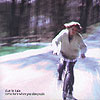 The next wave of laptop musicians appear to be providing a little more of the human element in their work by taking their faces from the blue glow of their displays and putting them in front of a microphone. Not only does this literally breathe new life into the genre, but also makes for the possibility of more interesting live performances. As Clue to Kalo, Australian laptop artist/producer Mark Mitchell blends his vocal and other musical abilities with his programming skills to give an hour's worth of complex electronic-pop compositions over the ten tracks on Come Here When You Sleepwalk.
The next wave of laptop musicians appear to be providing a little more of the human element in their work by taking their faces from the blue glow of their displays and putting them in front of a microphone. Not only does this literally breathe new life into the genre, but also makes for the possibility of more interesting live performances. As Clue to Kalo, Australian laptop artist/producer Mark Mitchell blends his vocal and other musical abilities with his programming skills to give an hour's worth of complex electronic-pop compositions over the ten tracks on Come Here When You Sleepwalk.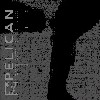 A growing number of new bands are embracing the characteristics and conventions of heavy metal in their quest for tense, dramatic post-rock instrumentalism. Pelican are a new instrumental group from Chicago, and this untitled EP on Hydra Head is their first release. The EP is quite promising, filled to the brim with big, crunchy heroic power chords and melodic riffs. The sound is not far from bands such as Explosions in the Sky or The Fucking Champs, but without all of the slow-burn atmospheric filler.
A growing number of new bands are embracing the characteristics and conventions of heavy metal in their quest for tense, dramatic post-rock instrumentalism. Pelican are a new instrumental group from Chicago, and this untitled EP on Hydra Head is their first release. The EP is quite promising, filled to the brim with big, crunchy heroic power chords and melodic riffs. The sound is not far from bands such as Explosions in the Sky or The Fucking Champs, but without all of the slow-burn atmospheric filler.
